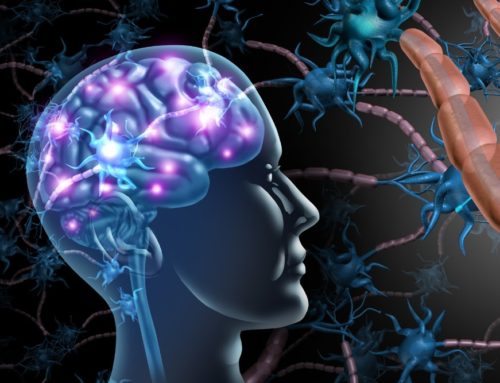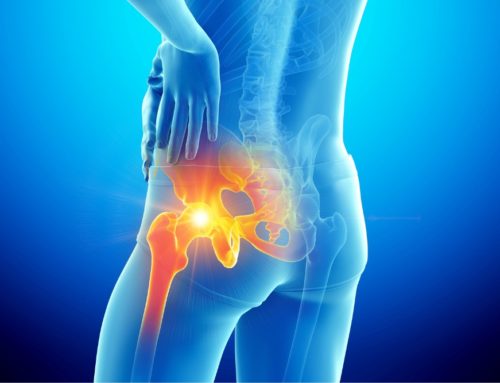What is the Root Cause of Grave’s Disease?
Grave’s disease occurs when the immune system attacks the thyroid, instigating excessive hormone production. Such high hormone levels could result in hyperthyroidism, Grave’s ophthalmopathy, or Grave’s dermopathy. Though medical professionals aren’t sure of the disease’s exact cause, some links to its development are apparent. These include genetics, hormonal alterations, viruses, high-stress levels or a combination of factors.
Though there is no cure, your doctor may recommend a few treatment options. These include medication, radioiodine therapy, or surgery, depending on age, other medical issues, and severity of the symptoms. Health education, including lifestyle changes and stress and mental health relief methods, is often recommended.
Symptoms of Grave’s disease include muscle weakness, weight loss, irregular heartbeat, sweating, fatigue, and goiters. If you notice these or other unexplained indicators of the disease, speak to your doctor as soon as possible.

Causes of Grave’s Disease
Your genetic makeup could cause Grave’s, especially genes in the human leukocyte antigen complex family. These genes work with your immune system to locate bacteria and other harmful guests. Variations in the HLA complex cause them to do the opposite, attacking healthy proteins instead.
Experts have linked emotional stress to the development of Grave’s disease. Chronic distress and worry increase stress hormones, including glucocorticoids, catecholamines, and cytokines. Consistent high levels of these hormones alter immune function, leading to Grave’s and other unexpected medical consequences.
Viruses and infections could also contribute to the onset of the condition. Recent studies have shown a high prevalence of infectious viruses in the thyroid tissue of Grave’s patients. These included an enterovirus, human herpesvirus 6, parvovirus B19, Epstein-Barr, and cytomegalovirus. Approximately a third of the tissue tested contained two or more viruses, possibly contributing to the condition’s progress.
Hormonal changes are another possible cause of Grave’s disease, especially in women. For instance, thyroid hormones increase during pregnancy to supply the mother and fetus. Even after the baby’s thyroid development, it doesn’t produce the proper hormone levels requiring its mother’s assistance. For many women, the alterations to the body’s thyroid functions trigger hormone overproduction and Grave’s.
Other causes
Thyroid hormones require about 150 micrograms of iodine for their creation. However, too much iodine causes overproduction, which experts believe results in Grave’s disease and hyperthyroidism. Since many food preservatives, antiseptics, and medications contain iodine, it may be hard to know when it’s being ingested.
Cigarettes contain thousands of chemicals and are linked to several serious medical conditions. According to recent studies, smoking could cause Grave’s orbitopathy, an eye disease occurring in a third of Grave’s disease patients. Some evidence shows the condition is more severe in smokers than non-smokers.
Health education and lifestyle
Grave’s has no cure, but you can manage the symptoms with the proper care. Your medical team will offer health education, including effective treatment options. As well as standard care, complementary and alternative medicine (CAM) is also an option. Discuss any decisions with your doctor to ensure new approaches are safe.
Lifestyle alterations are also essential for reducing any complications or side effects of Grave’s disease. These include eating healthy meals, managing your weight, and reducing stress. Exercise is also vital, though your doctor may recommend breaking physical activity into short sessions to avoid fatigue.
A case report by PubMed highlighted that Graves’ disease could be successfully brought into long-term remission without relying on traditional medical treatments. It also underscores the significance of adopting a healthy lifestyle as the primary approach, particularly for patients dealing with Graves’ disease.
According to the case, a 34-year-old patient did not use any antithyroid drugs, beta-blockers, or other medications with immunosuppressant effects during this time. After six months of following these lifestyle changes, her thyroid tests returned to normal, and no anti-thyrotropin receptor antibodies were detected.
Resources:
- MedlinePlus, Grave’s disease
https://medlineplus.gov/genetics/condition/graves-disease/#causes - NCBI, Dec. 13, 2023, Stress-Induced Graves’ Disease: Spontaneous Recovery After Stress Relief
https://www.ncbi.nlm.nih.gov/pmc/articles/PMC10750305/ - NCBI, July 14, 2022, High Prevalence of Common Human Viruses in Thyroid Tissue
https://www.ncbi.nlm.nih.gov/pmc/articles/PMC9333159/ - NIDDK, Thyroid Disease and Pregnancy
https://www.niddk.nih.gov/health-information/endocrine-diseases/pregnancy-thyroid-disease#:~:text=Graves’%20disease%20may%20first%20appear,may%20be%20why%20symptoms%20improve - National Library of Medicine, May 2001, Iodine excess and hyperthyroidism
https://pubmed.ncbi.nlm.nih.gov/11396708/ - Frontiers, April 3, 2023, Influence of biological sex, age and smoking on Graves’ orbitopathy – a te3n-ear tertiary referral center analysis
https://www.frontiersin.org/journals/endocrinology/articles/10.3389/fendo.2023.1160172/full - American Thyroid Association, Complementary and Alternative Medicine in Thyroid Disease (CAM)
https://www.thyroid.org/thyroid-disease-cam/ - British Thyroid Foundation, Healthy living: diet, sport, exercise and social life
https://www.btf-thyroid.org/healthy-living-diet-sport-exercise-and-social-life - Healing of Graves’ Disease Thorough Lifestyle Changes: A Case Report Kelly Brogan, Gisela Marcelino, Christina Pedro, Alyssa Siefert
https://pubmed.ncbi.nlm.nih.gov/31476135/ - Grave’s Disease and mental disorders. 2020 Mar; 19: Atsushi Fukao,a,⁎Junta Takamatsu,bTakeshi Arishima,c Mika Tanaka,d Toshio Kawai,e Yasuki Okamoto,f Akira Miyauchi,c and Akihisa Imagawag
https://www.ncbi.nlm.nih.gov/pmc/articles/PMC6864135/
This article contains informational and educational materials and does not replace health or medical advice. For questions or concerns regarding your medical condition or health objectives, speak to a qualified physician or healthcare provider.






Leave A Comment